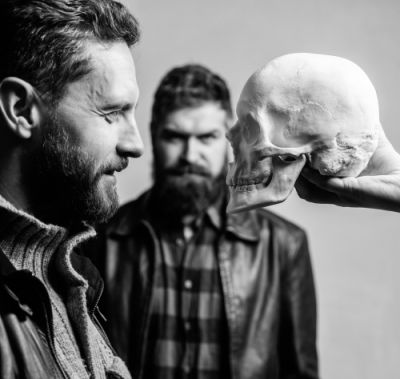 Humans have a strange relationship with death. We’ve devised religious and cultural beliefs in our quest to understand and contend with our mortality. Yet as much as some may remain fascinated by death, others fear it. The death positivity movement seeks to change this, offering new understandings and better tools for dealing with the ends of our lives.
Humans have a strange relationship with death. We’ve devised religious and cultural beliefs in our quest to understand and contend with our mortality. Yet as much as some may remain fascinated by death, others fear it. The death positivity movement seeks to change this, offering new understandings and better tools for dealing with the ends of our lives.
A Quick History of American Funerary Practices
During the Victorian Era, people were much more familiar with death. After all, they were constantly surrounded by it. According to the Encyclopedia of Death and Dying, infant mortality rates were much higher during that period. If you made it to young adulthood, you could still die from disease, poisoning from common household products, drug overdoses, malnutrition, workplace hazards, or violence. Unlike modern times, your body wouldn’t end up in a funeral home. Instead, your family would clean and dress it. Your wake and funeral would be hosted at home, in the family parlor where your body was displayed.
Writing for The Conversation, Brian Walsh explains that embalming techniques first developed during the Civil War. Thousands of soldiers died in the field, buried in mass graves or left behind. Wealthy families requested that the bodies of their relatives be returned home. With no refrigeration, these corpses wouldn’t survive the long trip. Embalming helped stave off their decay until they could be safely interred. The practice became even more popular after President Abraham Lincoln’s body was embalmed. Eventually, it became regulated and funerals turned into an industry.
One Mortician Starts a Revolution
Frequent close encounters with death can change one’s perspective. This was the case with Caitlin Doughty, a Los Angeles mortician who founded the Order of the Good Death in 2011. As the Order’s website reveals, she held a job transporting bodies from funeral homes to a local crematorium during her early career. Mortuary school allowed her to see other aspects of the funeral industry.
From these experiences, she concluded that a more honest and open engagement with death was needed in Western culture. In a May 2013 Pacific Standard piece, Kim O’Connor mentions two of the Order’s founding members, Sarah Wambold and Megan Rosenbloom. As a funeral director, Wambold advocates for home burials, green funerary practices, and promoting DIY approaches to caring for the dead. Rosenbloom is a University of South Carolina medical librarian and the creator of Death Salon, which offers a multidisciplinary approach to engaging with cultural ideas of death.
The Death Wellness Concept
“Death positivity” and “death wellness” are two different terms for the same basic idea: an interdisciplinary approach to changing how we handle death. “Healthcare experts, academics, and spiritual leaders welcome us to confront anxiety about eternal rest,” explains journalist Rina Raphael. Death doulas offer emotional support and resources to help people and their families prepare for the ends of their lives. Some funeral homes are on board, offering natural burials or allowing families to dress their deceased loved ones’ bodies. Palliative care and hospice workers explore death wellness to provide better care.
Of course, you needn’t be a professional to get involved with death wellness. Healthline mentions Death Café, which hosts casual events where attendees talk more openly about dying. The WeCroak app invites users to “find happiness by contemplating your mortality,” sending quotes about death to aid in contemplation. In New Zealand’s Coffin Clubs, people build coffins for themselves or their loved ones.
Accepting Death With Peace of Mind
Death can seem scary, but it doesn’t need to be. Death wellness and positivity seeks to transform a deathphobic culture into one with more acceptance. It also wants to help people exercise their agency and take an active role in how they plan for the ends of their lives. With improved resources and more options, people can face the end with peace of mind.
Add Your Comment